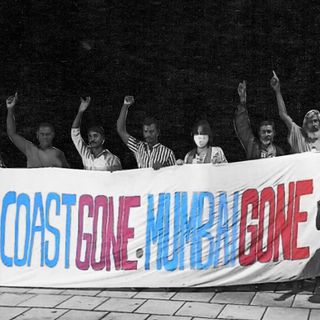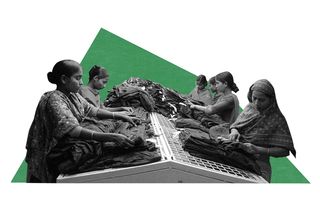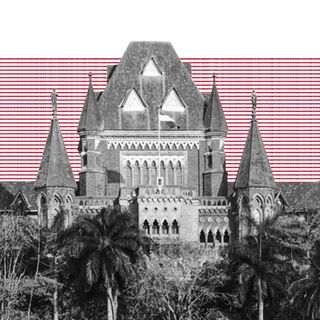
Fashion Brands in India Could Learn From Bangladesh Garment Workers’ Safety Accord
Almost 200 international fashion companies signed the accord after the 2013 Rana Plaza factory fire killed more than 1,100 people.

An agreement designed to protect the safety of garment workers in Bangladesh was renewed by more than 200 fashion brands this week. The “Bangladesh Accord” remains the first legally binding contract between workers, apparel companies, and factory managers to put necessary safeguards for the safety of workers.
The Accord came into place after the collapse of the Rana Plaza garment factory in 2013, which killed more than 1,000 people. The scale of devastation shocked the world as the instance became the first marker of poor factory safety and substandard worker condition. The labor-intensive working environments, padded with high demands and long hours, have become synonymous with many fast fashion companies.
The Accord was renewed this month with much of the pre-existing conditions in place. “This international accord is an important victory towards making the textile and garment industry safe and sustainable,” a union leader said in a press release. The new accord expands the scope of safety – coverage will include general health in addition to fire and building safety hazards. It is thus named the International Accord for Health and Safety in the Textile and Garment Industry to reflect wider reach.
“The binding nature of the agreement — in which brands are responsible for ensuring safety in their factories, and can be held liable in court if safety violations are not resolved — is what made it historic and also what made it effective, according to experts,” Rachel Cernansky wrote in Vogue. Studies have noted that the agreement has translated into safety improvement and fewer disasters at factories throughout Bangladesh. The Accord helped make 1,600 factories in Bangladesh safer for more than two million workers, according to activists.
The reformation of fashion’s supply chain is a due reckoning for most countries. Low wages, waning rights, are coupled with safety hazards. The use of cheap labor in the Global South, in particular, in countries such as Bangladesh and India, has invited criticism by union leaders and activists.
In 2018, a worker’s death in the “textile valley” area of Tamil Nadu highlighted factory risks and lack of safety. Earlier this year, a young garment worker at an H&M factory in Tamil Nadu was allegedly murdered by her supervisor after facing sexual harassment. More recently, the two fire accidents in the Nandan denim factory in Ahmedabad last year showed the disregard for safety regulations. The factory had only one door up a ladder for escape, spotlighting the deficiencies in infrastructural safety.
Related on The Swaddle:
Women Bear the Brunt of Bangladesh Garment Industry’s Covid19 Layoffs
The health hazards are also fueled due to the type of work. Workers are exposed to chemicals, cotton dust, and noises.
Due to poor pay and urgent need for work, workers are willing to comply with low standards. The lack of regulations creates exploitative work conditions. Fast fashion, companies like H&M and Zara, have been indicted for their role and lack of accountability in these instances.
The conditions of work are equally important as the wages workers receive. Workers do not have a guaranteed minimum wage, a concern that sparked protests in Karnataka in 2019. Most international brands were found to send 80% of workers home without pay, according to a survey of factory employers.
The lack of wage security also restricts workers from claiming insurance and added protection. Even when they are eligible for insurance, factories default on their share of the scheme or paying only in part, campaigners say. An Indian garment worker who lost her fingers and livelihood in a factory accident in 2017 protested the lack of justice. “Twelve of us were injured in the accident. We were told we would be compensated for the medical expenses and paid salaries only if we went back to work,” she told Reuters.
“There is an absence of social security and other benefits for contract workers, even though they are eligible for Provident Fund and health benefits under law. In some cases, the deductions for social security benefits are never made from the workers’ wages, while in others they may be made but not deposited in the accounts of the workers,” according to an International Labor Organization study on the working conditions of migrant garment workers in India in 2017.
Another ILO report from 2015 showed more than half of the garment workers in India would prefer to quit work; owing to high targets, poor working conditions, and poor wages.
Related on The Swaddle:
Tell Me More: Talking Inequality in Sustainable Fashion Aesthetics With Meher Varma
The question of rights gained new validity during the pandemic. Lakhs of workers have lost jobs, face reduced wages and poor working conditions. “In Covid in particular, when brands have to think about garment workers versus their own bottom lines, it’s their own bottom lines that always win,” Ayesha Barenblat, founder of the advocacy group Remake, told Vogue. In Karnataka, garment workers protested overnight layoffs by H&M last year, who also refused to pay for the work done so far.
More recently, Indian designer Sabyasachi’s new collection with H&M, notorious for its faulty labor rights, sparked a conversation about the rights and protection of indigenous workers. The cost of cheap fashion often comes at the safety and lives of workers, and activists noted the importance of making sure workers got their due in this case.
The conditions that led to the Bangladesh Accord were triggered by a human rights disaster. Notably, the companies are making efforts to ensure the crisis isn’t repeated, but the effort must move a step beyond paying lip service. Miedema, an activist with the Clean Clothes Campaign, tells Vogue: “It sounds ridiculously abstract. We’re talking about words like individual accountability, enforceability, oversight. But what’s at stake is workers’ lives.”
In the present negotiations, the will of union leaders and activists powered through the rigidity of fashion brands. “What sets the Bangladesh Accord apart from other industry initiatives and collaborations is that it both holds signatory brands legally accountable for safety violations in their supply chain, and requires them to invest some financial resources for fixing them.”
The legal recognition of health and workplace safety for garment workers must translate into a global trend. “If there is no accord, there is no safety. There is no accountability, no responsibility,” Nazma Akter, founder and executive director of the Awaj Foundation, a labor rights organization in Bangladesh, told Vogue.
Perhaps, what’s at stake is the balance of power between workers and companies, and the precedent it sets for countries globally. Talking about labor rights, and acting on it, must be viewed together.
Mayisha Begum, an activist, summarizes the gravity of the issue in Ohsoethical: “Actual empowerment is speaking out and fighting against the exploitative fashion industry, a tool of neo-colonial control, that continues to dictate the lives of workers in the Global South.”
Saumya Kalia is an Associate Editor at The Swaddle. Her journalism and writing explore issues of social justice, digital sub-cultures, media ecosystem, literature, and memory as they cut across socio-cultural periods. You can reach her at @Saumya_Kalia.
Related


State Is Responsible if Malnourished Children Die in the Tribal Belt: Bombay HC
